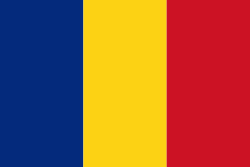Orăștie (Municipiul Orãştie)
 |
7th–9th century – On the site of an old swamp was a human settlement, now the location of the old town center, whose remains can be traced into the 10th century when the first fortification was built with raised earth and wood stockades.
11th–12th century – The first Christian religious edifice was raised: The Orăștie Rotunda. It is a circular chapel, with an age estimated at 1000 years. Perhaps it was used only by aristocratic families that dominated the Orăștie area and surroundings in the 11th century. Nearby there is a similar construction from the same period – The Geoagiu Rotunda.
1105 – In the wake of the First Crusade Anselm von Braz ”liber de liberis genitus", châtelain of Logne, Walloon ministerial count settled here. The historian Karl Kurt Klein implies – though without proof – that he moved with his sons and descendants into the region where Orăștie City is located today.
1200 – According to Transylvanian chronicles, this is the year in which construction of the city walls began. Subsequently, this was abandoned because of unfavorable conditions.
1206 – The King of Hungary, Andrew II, mentioned Romos, a village near Orăștie, as one of the first three villages in Transylvania comprising Saxon colonists. The other two villages are Ighiu and Cricău.
1224 – Andrew II confirmed the privileges of the Saxon colonists and mentioned the existence of Romanian (Blachi) and Pecheneg (Bisseni) populations who lived in the forests surrounding the town. The settlement kept a number of privileges granted by the Hungarian royalty. The town was ruled by a royal judge (iudex regium), helped by 12 jurors chosen from local craftsmen and rich traders.
1239 – This is the probable founding year of the convent of the Orăștie Franciscan church.
1241 – Orăștie was devastated during the Mongol invasion. A Mongolian tumen under the leadership of Büri entered Transylvania via the Olt Valley, near Făgăraș, from the direction of Sibiu, which was conquered on 11 April. One after another were devastated the Seats of Miercurea Sibiului (Ruzmargt), Sebeș (Mühlbach) and Orăștie (Broos). The Mongolian army arrived at Cenad on 25 April. Orăștie was probably destroyed between 11 and 25 April. The Mongol devastation of the settlements and cities is vividly shown in the dramatic description of Alba Iulia written by the Franciscan friar Rogerius of Apulia: "“ ... I could not find anything except the bones and skulls of those who were killed, scattered and broken walls of churches and palaces that have been sprinkled by the blood of Christians'." In the future, King Béla IV would populate the region with new Saxon colonists and settlers.
1309 – Orăștie had about 1,600 inhabitants. The Franciscan Order had been established in the city, and they built a church on the site of the current Franciscan friary.
Map - Orăștie (Municipiul Orãştie)
Map
Country - Romania
 |
 |
| Flag of Romania | |
Europe's second-longest river, the Danube, rises in Germany's Black Forest and flows southeasterly for 2857 km, before emptying into Romania's Danube Delta. The Carpathian Mountains cross Romania from the north to the southwest and include Moldoveanu Peak, at an altitude of 2544 m.
Currency / Language
| ISO | Currency | Symbol | Significant figures |
|---|---|---|---|
| RON | Romanian leu | lei | 2 |
| ISO | Language |
|---|---|
| HU | Hungarian language |
| RO | Romanian language |















